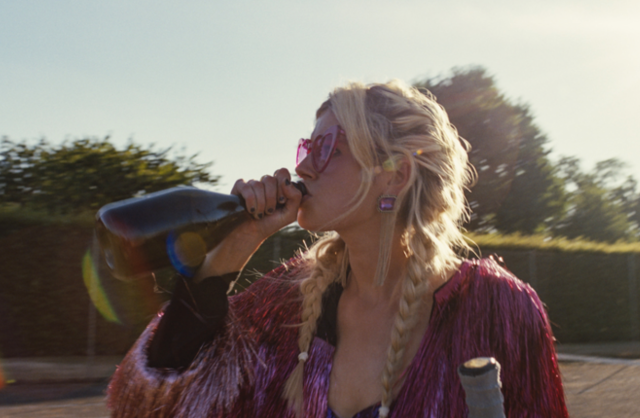This website uses cookies so that we can provide you with the best user experience possible. Cookie information is stored in your browser and performs functions such as recognising you when you return to our website and helping our team to understand which sections of the website you find most interesting and useful.
How Saltburn reminds us about Noughties drinking culture
Amazon’s latest drama Saltburn has reminded viewers of how much drinking culture has changed in the past twenty years from the film’s mid-Noughties setting.

This article contains plot spoilers of the film.
Watching the film, which has proved divisive amongst critics, is not only an exploration of class politics but also takes a deep dive into the changes in drinking culture – and the difference between student drinking and the alcohol provided in the stately manor house Saltburn. It is also a time when I was a student at university, and takes me back in an instant to the difference between then and now.
Firstly, the price of drinks. In an early scene, the protagonist Oliver Quick — a delightfully Waughian character name — cannot afford a round of Jägerbombs (or at least gives the appearance that he cannot). The object of his desire, Felix Catton, offers him a £20 that he must have “dropped on the way to the bar”.
Now, as the drinks business reported in February, you would be lucky to receive change for £10 for a single shot of Jägermeister at some establishments. But back in the mid-Noughties, a large round for £20 would have been considered about right for 10 shots and glasses of Red Bull. The other thing to note in this scene is how Felix comments on the price as “a fortune”. How times have changed for the on-trade.
The King’s Arms
Alongside the (subsidised) student bar, Oxford’s The King’s Arms plays a central role in the development of Felix’s and Oliver’s relationship. What becomes apparent after a few moments is that something is missing: the smartphone. In a number of scenes, the director Emerald Fennell uses the pub as a space for intimate and direct conversation over a couple of pints and a bag of crisps. Indeed, the venue is the place where Oliver offers his (supposedly) dramatic backstory to the sympathetic ear of Felix.
It is hard to not feel nostalgic for such a scene. Smartphones now act as a barrier to conversation, and with the constant interruption of the screen, some pubs have tried to ban them from their establishments. In 2019, Sam Smith’s sent out a memo to managers and for display in pubs, stating that’s policy was “not to allow customers mobile phones, laptops or similar inside our pubs”. In 2016, a gin bar in Hove, near Brighton, even went as far as to block mobile phone signal upon entry, in a bid to encourage phone-free interaction. But it continues to feel these are outliers rather than the mainstream view.
In addition, another place where smartphones don’t appear is during the scenes at Saltburn during Oliver’s birthday party, and throughout his drunken summer in the house. Again, this has an interesting impact. No selfies at the party, no constant social media updates, and, importantly for the plot of Saltburn, no opportunities to verify or counteract people’s stories. The screen shows a room fully engaged with one another, and it’s fascinating to witness the absence of technology in such an environment.
Smoking
Perhaps most obviously representing the era in the film is the indoor smoking. A conscious and inevitable choice by Fennell, but it does illustrate an important point. If she had decided to not let the main characters sit and smoke in the pub, it would have looked odd, and even anachronistic.
Smoking was so prevalent in the on-trade at the time that there were predictions of a 30% decline in sales as a result of the ban in 2007, based on the earlier decision in New York to implement a ban. It would have looked out of place if people hadn’t been lighting up left, right, and centre.
What is perhaps forgotten, including by Fennell herself, is as the ban approached how many venues had already taken action to fully implement a no-smoking policy before the government law came in. Nevertheless, there were many pubs and bars across the country that undertook a ‘big smoke-in’ the night before the enforcement came into place, to celebrate the final night of freedom for smokers. And sadly the figures were right, with some predicting around a 15-20% reduction in on-trade spend from smokers as a result of the ban.
Champagne or beer?

Culturally, there are a number of differences between Oxford and when Oliver and Felix retreat to Saltburn for the summer, including what and how they drink.
Basically everyone is drinking Champagne, all the time, at Saltburn. Now, some may wonder whether this is true to life or not, but certainly the perception that Fennell wants to provide is that the aristocracy are constantly swigging bottles of Dom Pérignon, including, and especially, when playing tennis.
And then, of course, there is cocktail hour. Throughout the film, Rosamund Pike’s character Elspeth Pike is frequently pictured with an ornately decorated glass that one imagines to be full of a cool gin and tonic or a Martini. The glass, and the way she handles it, clearly intended to illustrate a louche and confident manner.

It is a far cry, and intentionally so, from the beer and crisps of the student bar.
Still wine, interestingly, plays a lesser, and mainly symbolic, role in the film. Red wine is used at the very end to confirm Felix’s sister, Venetia, descent into (apparent) madness at his untimely death. And the colour of the wine is mainly symbolic for both an early scene in the film, and a forthcoming one where she herself dies in an (apparent) suicide. Unlike in many such films, where wine knowledge is used as a signifier of wealth and status, Fennell avoids such an obvious trap, which can, it must be admitted, feel very heavy-handed. When wine isn’t being used to signify death, characters are mainly just drinking it, quietly, with their evening meal during the various silver service scenes.

